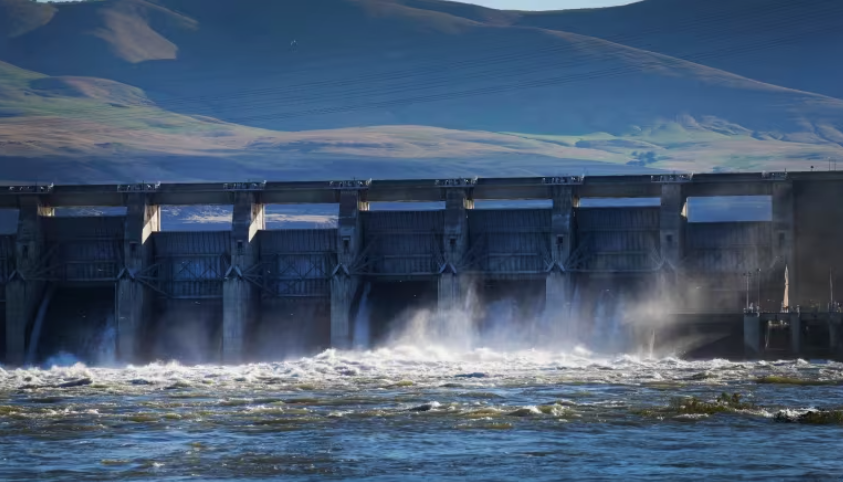The Northwest Territories Power Corporation has been using more than seven times the usual amount of diesel to generate electricity in the North Slave as low water levels impede its hydroelectric dam system. The Snare hydro system is a series of four hydro plants that provide power to Yellowknife, Behchokǫ̀ and Dettah. The system usually generates about 98 per cent of all the electricity needed to power those communities, but this year — it's been a different story.
Money, power and an ecosystem are all at stake in Canada-U.S. negotiations over a massive river
Walk along the banks of the Columbia River in B.C. and you might be forgiven for thinking it's like any of the province's other big waterways. You might spot a sturgeon, or glimpse one of the more than 60 dams in the Columbia's watershed. But the Columbia is not like other rivers. For one, it crosses the U.S. border to empty into the Pacific in Oregon. The Columbia River basin is also a vital source of electricity, providing about 40 per cent of all U.S. hydroelectric power, while B.C. draws almost half of its total electrical generation from the region.
New Jersey utilities float solar panels on reservoir, powering water treatment plant
New Jersey’s Canoe Brook Water Treatment plant produces 14 millions gallons of drinking water a day. Each one of those gallons weighs around 8 pounds , so it’s quickly apparent that a large amount of energy is needed to move water from a reservoir to the treatment plant and into the 84,000 homes and businesses that the New Jersey American Water Company serves in the area. So the water utility partnered with NJR Clean Energy Ventures, the renewable energy subsidiary of the natural gas firm New Jersey Resources, for a solution. NJR Clean Energy Ventures built a vast array of solar panels, linked them together, and placed them on the surface of the water at Canoe Brook Reservoir.
Hydro once made up around half of Alberta's power capacity. Why does Alberta have so little now?
When you think about renewable energy sources on the Prairies, your mind may go to the wind farms in southern Alberta, or even the Travers Solar Project, southeast of Calgary. Most of the conversation around renewable energy in the province is dominated by advancements in solar and wind power. But what about Canada's main source of electricity — hydro power?
Windsor city council to discuss Capital Power proposal for 2 natural gas turbines
Shukin said power lines "can only carry a certain amount of power" and the IESO giving the green light on the turbines means the lines had room to transmit more power. He said Capital Power has done studies on "noise, air quality, storm-water management, natural environment, heritage, and socio-economic factors." Shukin said the company is "committed to achieving net zero emissions by 2045" and the turbines, which can be partially powered by hydrogen, support that objective.
River Talk — Movement grows to build weir/dam across Koocanusa Reservoir
Completed in 1973, the Army Corps of Engineers dam was designed to regulate how spring snow melt in the Kootenay River watershed (87% of which originates in Canada) enters the downstream watershed. It has done so effectively, but at a considerable price to local residents. The upper end of the reservoir in Canada bears the brunt of the storage draw down each spring, and in dry years, the reservoir’s moonscape does not always refill to a level that allows for much recreation. The control over these water levels is 100% vested in American operation of Libby dam.







